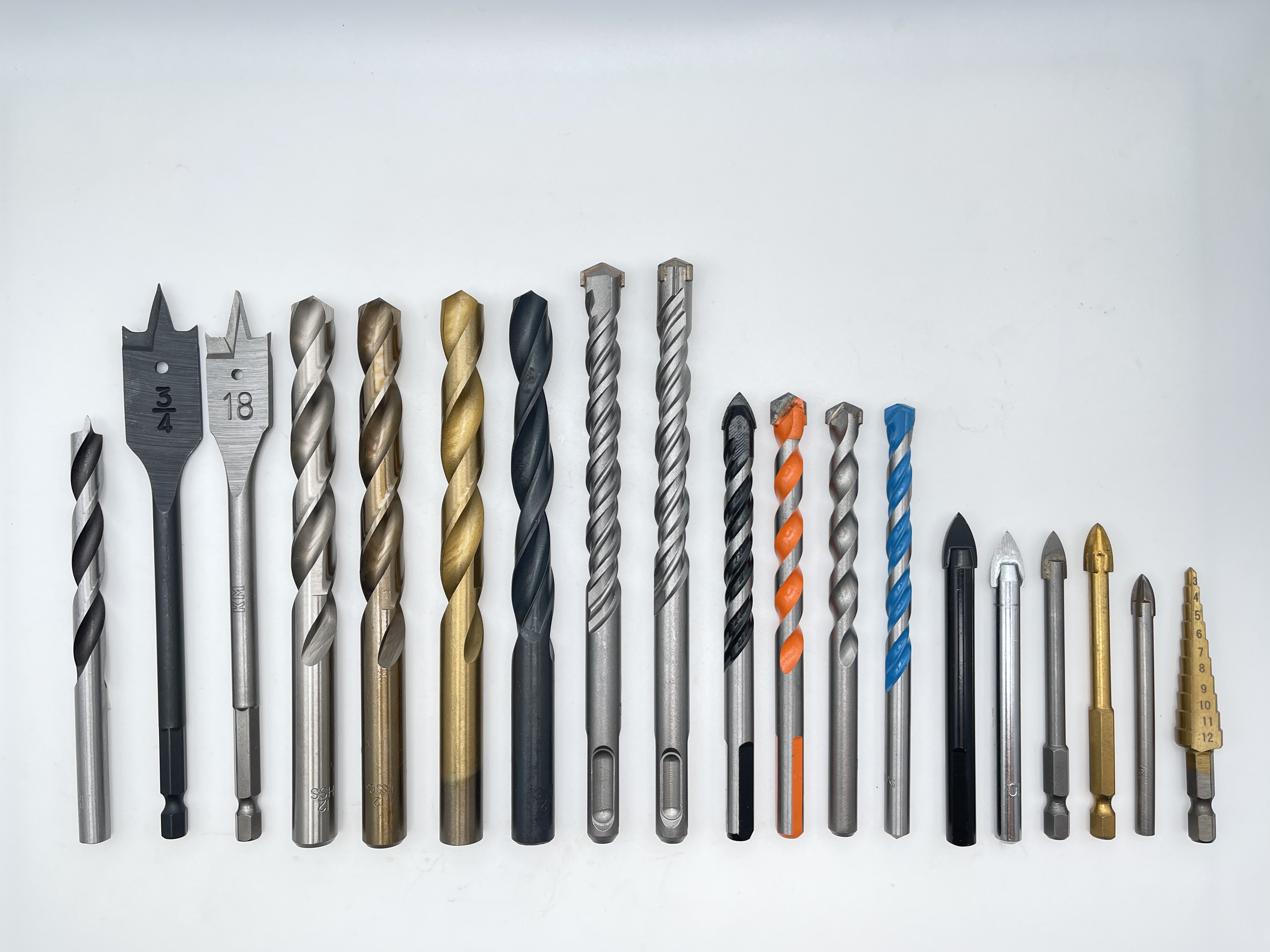
Drilling is a very common processing method in manufacturing. When purchasing drill bits, drill bits come in different materials and different colors. So how do different colors of drill bits help? Does color have anything to do with drill bit quality? Which color drill bit is better to buy?
First of all, we need to make it clear that the quality of a drill bit cannot be judged simply by its color. There is no direct and inevitable relationship between color and quality. The different colors of drill bits are mainly due to different processing techniques. Of course, we can make a rough judgment based on color, but today's low-quality drill bits will also process their own colors to achieve the appearance of high-quality drill bits.
So what are the differences between drill bits of different colors?
High-quality fully ground high-speed steel drill bits are often found in white. Of course, the rolled drill bit can also be whitened by finely grinding the outer circle. What makes them high quality is not only the material itself, but also the quality control during the grinding process. It is quite strict and there will be no burns on the tool surface. The black ones are Nitride drill bits. It is a chemical method that places the finished tool in a mixture of ammonia and water vapor and performs heat preservation treatment at 540~560C° to improve the durability of the tool. Most of the black drill bits currently on the market are only black in color (in order to cover up burns or black skin on the surface of the tool), but the actual use effect has not been effectively improved.
There are 3 processes for producing drill bits. Black rolling is the worst. The white ones have clear and polished edges. Since high-temperature oxidation is not required, the grain structure of the steel will not be destroyed, it can be used for drilling workpieces with slightly higher hardness. Yellow-brown drill bits contain cobalt, which is an unspoken rule in the drill bit industry. Cobalt-containing diamonds are originally white, but are later atomized into yellow-brown (commonly known as amber). They are some of the best currently in circulation. M35 (Co 5%) also has a gold color called titanium-plated drill bit, which is divided into decorative coating and industrial coating. The decorative plating isn't great, it just looks pretty. The effect of industrial electroplating is very good. The hardness can reach HRC78, which is higher than the hardness of cobalt drill (HRC54°).
How to choose a drill bit
Since color is not the criterion for judging the quality of a drill bit, how to choose a drill bit?
From experience, generally speaking, white drill bits are generally fully ground high-speed steel drill bits and should have the best quality. The gold ones have a titanium nitride coating and are usually either the best or the worst and can fool people. The quality of blackening also varies. Some use low-quality carbon tool steel, which is easy to anneal and rust, so it needs to be blackened.
There are trademark and diameter tolerance markings on the shank of the drill bit, which are usually clear, and the quality of laser and electro-etching should not be too bad. If the molded characters have convex edges, it indicates that the drill bit is of poor quality, because the convex outline of the characters will cause the drill bit clamping accuracy to fail to meet the requirements. The edge of the word is well connected to the cylindrical surface of the workpiece, and the drill bit with a clear edge of the word is of good quality. You should look for a drill bit with a good cutting edge at the tip. Fully ground drills have very good cutting edges and meet the requirements for helix surfaces, while poor quality drills have poor clearance surfaces.
Post time: Oct-07-2023
